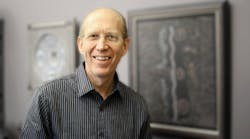Physical exercise deserves national attention. The National Center for Health Statistics reports that 32 percent of Americans over 20 years old are obese. Obesity in young people has tripled since 1980, with more than 12.5 million children aged 2-19 years considered overweight. The Centers for Disease Control School Health Index attributes more than 300,000 U.S. adult deaths each year to poor eating habits and physical inactivity (only tobacco-use contributes more); disease, cancer, stroke, diabetes, high blood pressure, and osteoporosis are linked to physical inactivity; 17 percent of 6-19 year-olds are overweight; half of 12-21 year-olds don’t regularly engage in vigorous physical activity; overweight children are at risk of heart disease, diabetes and being overweight as adults.
A recent report suggests that sitting is the new smoking in terms of lifestyle hazards that shorten our lifespans. Going to the gym doesn’t guarantee extended life, but it gives bodies increased ammunition to resist disease and more easily take advantage of medical advances. The same types of physical exercise we perform at an early age can continue, perhaps at a different intensity level, into our adult life.
School districts and universities play a major role of instilling a mindset of movement rather than sedentary lifestyles. To be physically active, students need time dedicated for this purpose and need access to appropriate facilities. Physical education is taught through various curriculum models: movement, sports and fitness. The new trend is to teach students the science behind why they need physical activity, focusing on student fitness and benefits of healthy lifestyles. The spaces architects and educators design have a dramatic impact in shaping the physical development of learners.
Schools need areas for fitness/wellness activities that include space for treadmills, elliptical machines, and stationary bikes. Floor space and equipment for a variety of activities including aerobics/gymnastics and floor/mat exercises is a priority. Schools should incorporate strength-training areas with stationary machines for two-dimensional movement to strengthen specific muscle groups. Additionally, provide space for free-weights (i.e., barbells, benchpress, and dumbells) for three-dimensional full-body workouts for all students (not just the football team). Provisions for traditional equipment (i.e., rock/rope climbing apparatus, batting cages, wrestling mats, and basketball-volleyball-badminton-pickleball accessories) are a fundamental necessity. While many of these spaces are common in universities and middle/high schools, it’s important to consider scaled-down versions for primary grades.
Outdoor spaces including play structures, playfields, tracks, tennis courts, walking trails, and stationary gym apparatus (i.e., dips/leg raise, recumbent/spinning bikes, and pull up/down machines) provide for holistic physical activity. In addition to the indoor and outdoor areas noted above, other considerations may include fieldhouses, swimming pools, hockey-skating rinks, wrestling rooms, health classrooms, and accessory spaces (i.e., lockers, training, and storage).
Choices for physical activity need to be provided and integrated into other forms of learning. Consider fitness programs that are enhanced through interactive video games. These high-tech alternatives require floor space and technology. Other non-standard choice programs (typically occurring off-site) accentuate fun-and-fitness skills development, such as water sports (e.g., kayaking and canoeing), winter sports (e.g., snow-skiing and snow-shoeing), and extreme sports (e.g., in-line skating and skateboarding).
This is all great, but how to afford all these facilities and pieces of equipment? Frequently, municipalities, school districts, universities and other public/private entities partner together to make it happen (e.g., locating school sites adjacent to city parks, constructing community gyms on school/college campuses, and connecting neighborhood pedestrian pathways to schools for walkers and bikers). No matter how the funding is achieved, the benefits extend to all ages.


